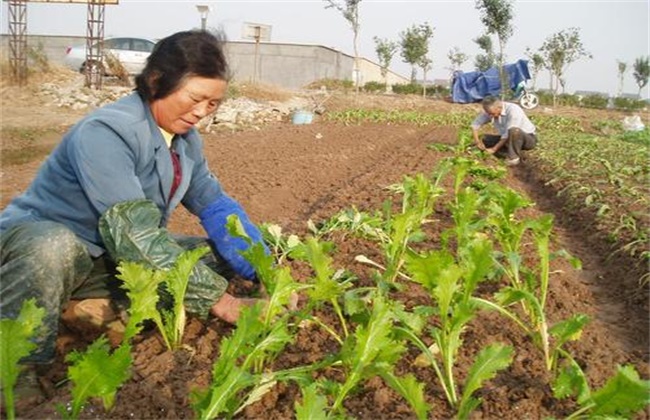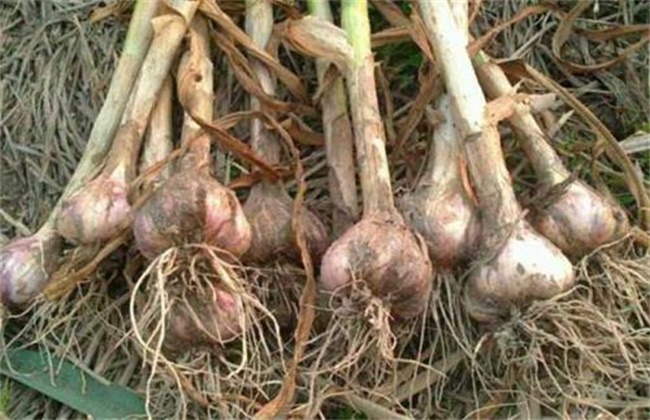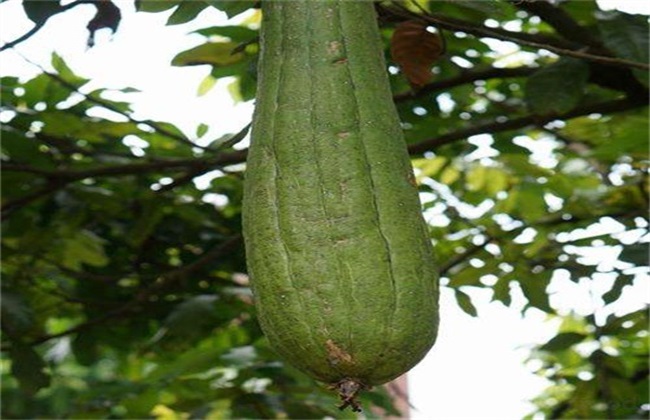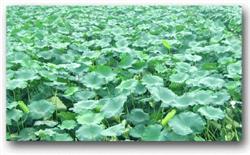seed retention Learn more about seed retention
-
Wheat seed retention relationship how to do a good job of wheat seed retention in next year's harvest

Wheat seed retention relationship how to do a good job of wheat seed retention in next year's harvest
2018-07-14 -
What are the seed retention techniques of towel gourd in greenhouse? How to operate it exactly?

Nowadays, many growers choose to grow towel gourd in greenhouse, and when planting towel gourd in greenhouse, keeping seeds is an important foundation to grow towel gourd well. So what are the seed retention techniques of towel gourd in the greenhouse? How to operate it exactly? 1. Strictly screen the plants that remain and keep the seeds.
2020-11-09 Greenhouse towel gourd seed retention technology what specific how operation -
Transplanting techniques and seed retention points of mustard

Transplanting techniques and seed retention points of mustard
2019-12-05 -
Seed selection and seed retention techniques of Lotus Root

Seed selection and seed retention techniques of Lotus Root
2019-02-23 -
Seed retention skills of garlic

Seed retention skills of garlic
2020-02-24 -
Technical methods of seed retention of scallions

Technical methods of seed retention of scallions
2018-07-01 -
Timely harvesting and seed retention skills of planting Peanut

Mastering the suitable harvest time of peanut is very important to improve the yield and quality of peanut. While harvesting peanuts, we should pay attention to selecting and keeping good seeds to ensure high peanut yields in the coming year. The suitable harvest time and seed retention techniques of peanuts are introduced as follows: first, timely.
2020-11-08 Planting flowers raw timely harvesting and leaving seeds skills mastery good flowers -
The latest course of technical methods for seed selection and retention of lotus root

Lotus root is a vegetable crop of Nymphaeaceae, which is loved by many people in our country. Lotus root is rich in nutrients, which can not only be fried, but also eaten raw. And the non-staple food and all kinds of snacks processed by lotus root are very popular. Now lotus
2020-11-10 Latest lotus root seed selection seed retention techniques methods tutorials -
Seed retention method of towel gourd

Seed retention method of towel gourd
2019-06-11 -
Spinach science seed retention technology

Spinach is an annual or biennial herb in the subfamily Chenopodiaceae. Also known as spinach, Persian grass. Edible from leaves and young stems. Spinach originated in Persia and was cultivated 2000 years ago. Later spread to North Africa, by the Moors spread to Western Europe, Spain and other countries. Spinach 647
2020-11-08 spinach science seed retention technology amaranthaceae chenopodium subfamily genus -
Scientific seed retention measures of lettuce

Lettuce, also known as lettuce, Asteraceae lettuce species can form a variety of fleshy tender stems, herbaceous plants in 2012. Alias stem lettuce, lettuce bamboo shoots, green shoots, lettuce. Delivery period: from January to April. It is native to Central or North China. The aboveground stem is edible and the stem bark is white and green.
2020-11-08 Lettuce science seed retention measures lettuce also known as lettuce Compositae -
Seed retention of Angelica sinensis

Seedling transplanting requires the use of moderately mature seeds from the third year of flowering. A plant, in addition to the main bud, there are many lateral buds. Both main bud and lateral bud can sprout, flower and bear fruit. Flowers and seeds can also grow between the axils of the main stem. Due to the different growth time of each flower, the flowering time and seed maturity are first and then. Therefore, when collecting seeds, we must often observe the field. Looking down from the top of the flower stem, see the first ear is pink, the second ear is pale red, and the third ear is pale yellow, that is, it needs to be harvested (generally in mid-August). overripe seed
2019-01-15 -
Technical methods of seed selection and retention of Lotus Root

(1) selection and breeding. The selection and breeding of lotus root mainly includes asexual seed selection and sexual cross breeding. 1. Asexual selection. China is rich in lotus root germplasm resources, which provides good conditions for asexual selection. In recent years, varieties selected from superior clones include Kexuan 1, Elian 1 and Zhejiang Lake.
2018-09-13 -
Site selection, cultivation and seed retention of Asarum

Asarum prefers a cool, moist environment, avoiding bright light and drought. The soil should be loose, fertile and rich in organic matter. So how to select and cultivate Asarum and keep its seeds? Generally, the seeds are sown at the beginning of July and the seeds are cracked at the beginning of August, and the radicles are exposed in the middle of August, which can reach 4 cm in early September.
2020-11-08 Asarum site selection cultivation and seed retention Xi cool -
The latest seed retention method of towel gourd

Towel gourd is an annual vegetable, except for some hybrid varieties purchased in the market can not keep their own seeds, in general, towel gourd can be planted locally, they can keep their own seeds to continue planting next year. There is also a certain fastidiousness in keeping the seed, and it has its own operation process. You usually have to decide which melon to choose.
2020-11-10 The latest towel gourd seed method is one year raw vegetable -
Selection, retention and storage of sweet potato species

Timely harvest sweet potato harvest is too early, the yield is low; too late harvest, easy to suffer from freezing, affecting storage. Therefore, it is generally best to start harvesting when the temperature is about 18 ℃, and finish harvesting when the temperature is above 10 ℃ (that is, before the dry frost period). Spring melon fields for dry use are usually harvested first.
2020-11-08 Seed sweet potato seed selection retention storage timely harvest -
Key points of transplanting and seed retention of mustard

Brassica juncea var.tumida cruciferous plants are often covered with simple hairs, forked hairs, stellate hairs, or glandular hairs. Flowers bisexual, usually in racemes; sepals 4, separate, two whorls; petals 4, clawed, arranged in a cross-shaped Corolla, a few apetalous (e.g.
2020-11-08 Mustard transplanting and leaving seeds main points mustard Brassica junc -
Seed retention technique of water celery

Water celery adopts asexual reproduction, and the stem is its breeding material. In water cropping, seeds and plants were selected in late November, and the seed selection criteria were as follows: good characteristics of the remaining varieties, moderate plant height, stout stem, short internodes, more and strong axillary buds, developed root system, no insect and no disease. The selected plants were then transferred to the reserved field. To keep farming, you should choose a place where it is leeward and sunny and where drainage and irrigation are convenient. Fine soil preparation and thick application of base fertilizer were carried out in the middle of October. When planting plants, keep 1 cm water layer in the field, and the spacing between rows and plants is 25 cm.
2019-01-16 -
Lily harvest and seed retention

1. Timely harvest (1) vegetable edible lily can harvest the Summer Solstice before Lesser Heat, the leaves of the lower part of the lily turn yellow, the bulb hypertrophy approaches the maximum value, and the sugar content of the scale reaches the highest value. In order to strive for the high price, "green lily" can be harvested as early as late June to late June to early July for vegetable use. For edible lily balls, because of its high water content and monosaccharide content, it is not suitable for seed and storage; used for processing dried lilies, the rate of finished products is not high. (2) the leaves of lily 2ripple 3 changed before and after Greater Heat was harvested in Yihuang, a medicinal and processing lily.
2019-01-16 -
Seed retention technique of potato in autumn

1. Fine soil preparation for autumn potato should choose fields with high topography, convenient drainage and irrigation and fertile soil, and loam soil is better. two。 Seed potato sprouting in mid-August, the harvested spring potato was picked out diseased potato, split potato, irregular potato, and cut into pieces according to the seed potato bud eye. Each seed potato was longitudinally cut into 6 pieces and mixed with 0.1 grams of gibberellin and 100 kilograms of water. Soak the potato pieces for 10ml for 20 minutes, take them out and dry them, then sprout with wet sand layer. Do not sprinkle water during budding, and the budding temperature should be kept above 30 ℃.
2019-01-16
